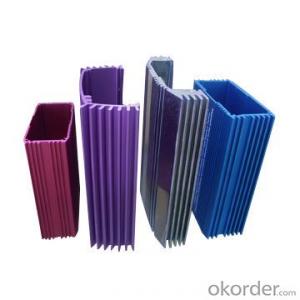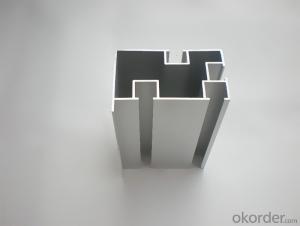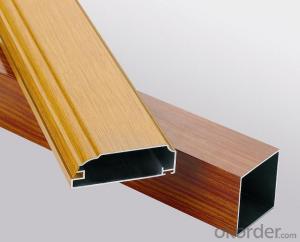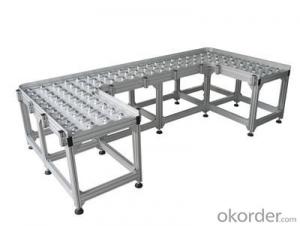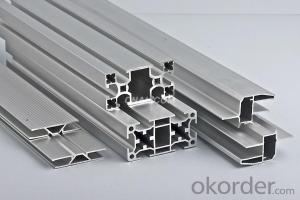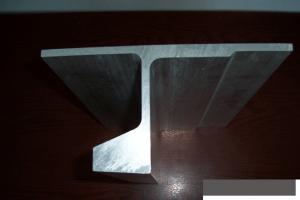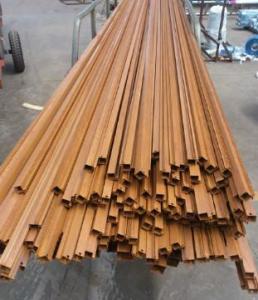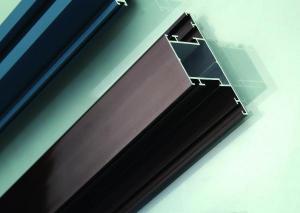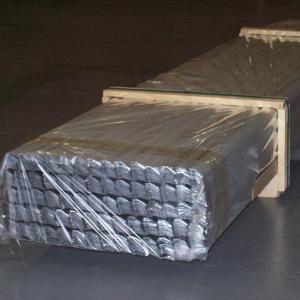Aluminum Extrusion Profiles Los Angeles - 6060, 6061, 6063, 6082 Grade Aluminium Profile Manufacturer
- Loading Port:
- China Main Port
- Payment Terms:
- TT OR LC
- Min Order Qty:
- -
- Supply Capability:
- -
OKorder Service Pledge
Quality Product, Order Online Tracking, Timely Delivery
OKorder Financial Service
Credit Rating, Credit Services, Credit Purchasing
You Might Also Like
Material | Alloy 6063,6061,6005or according to customer’s choice |
Temper | T3, T4, T5, T6 |
Surface | Anodize, electrophoresis, powder coating, PVDF coating, wood grain painting, matted, etc. |
Color | Any colour based on Standard Germany RAL Mark |
Length | Coating 6.5 meters, Anodizing 6.5 meters, Mill finish 5 meters |
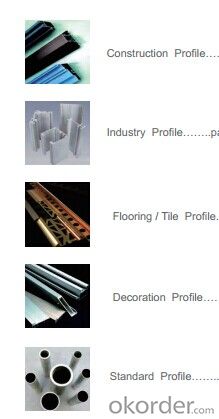
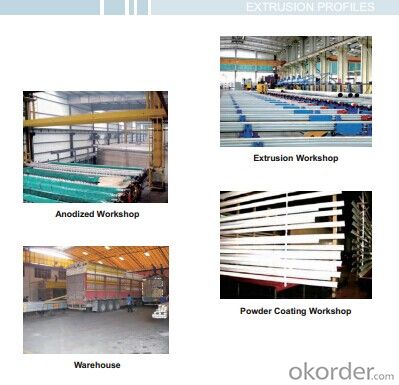

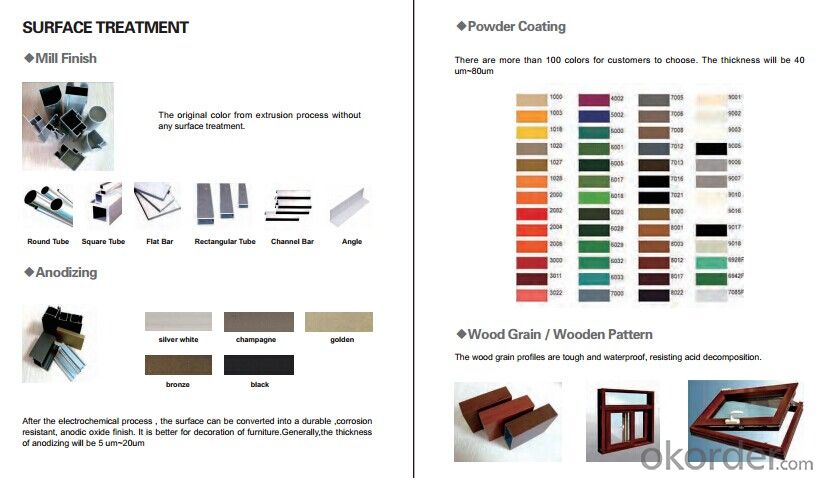
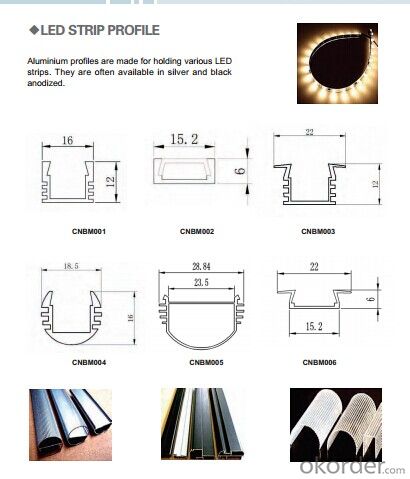
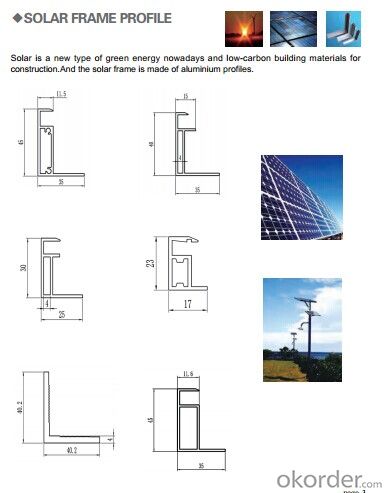
- Q: Is it possible to utilize recycled aluminum products as an alternative to new ones to decrease environmental impact and save costs?
- <p>Yes, using recycled aluminum products is an effective way to reduce environmental impact and cost. Recycling aluminum requires significantly less energy compared to producing new aluminum from raw materials, which reduces greenhouse gas emissions. Additionally, recycled aluminum retains the same properties as new aluminum, making it a viable alternative for many applications. This practice not only conserves resources but also lowers production costs, making it a sustainable choice for both the environment and your budget.</p>
- Q: This question asks for an explanation of various methods used to manufacture aluminum profiles, which are long, extruded shapes made from aluminum.
- <p>Aluminum profiles are manufactured using several processes, primarily extrusion, but also including casting, rolling, and machining. Extrusion is the most common method, where aluminum is heated and forced through a die to create a desired shape. Casting involves pouring molten aluminum into molds to form specific profiles. Rolling is used to produce flat sheets or plates, which can then be further processed. Machining involves cutting and shaping aluminum using tools like lathes and mills. Other processes include forging, which deforms aluminum under high pressure, and powder metallurgy, where aluminum powder is compacted and sintered into a solid profile. Each process has its advantages and is chosen based on the desired profile shape, strength, and application.</p>
- Q: Can aluminum profiles be anodized for improved corrosion resistance?
- Yes, aluminum profiles can be anodized for improved corrosion resistance. Anodizing is an electrochemical process that forms a protective layer of aluminum oxide on the surface of the metal. This layer not only enhances the appearance of the aluminum profile but also provides excellent corrosion resistance properties. During the anodizing process, the aluminum profile is immersed in an electrolytic solution and a direct current is applied. This causes oxidation to occur at the surface of the metal, resulting in the formation of a thick layer of aluminum oxide. This oxide layer is hard, durable, and tightly adheres to the underlying aluminum, providing a barrier against corrosion. The anodic oxide layer can further be enhanced by sealing it with various sealing methods, such as hot water sealing or chemical sealing. This helps to increase the resistance of the anodized aluminum profile against environmental factors like moisture, chemicals, and UV radiation. Anodized aluminum profiles have several advantages over non-anodized ones. They have improved resistance to corrosion, scratches, and wear. Additionally, anodizing can also provide the aluminum profile with a decorative finish, as it allows for a wide range of colors to be applied. Overall, anodizing is a highly effective method to enhance the corrosion resistance of aluminum profiles, making them suitable for various applications where protection against corrosion is essential, such as in construction, automotive, aerospace, and electronics industries.
- Q: Can aluminum profiles be used in the construction of modular buildings?
- Modular buildings can benefit from the utilization of aluminum profiles. These profiles possess a combination of lightweight properties and strength, ensuring durability and making them a perfect material for modular construction. Their fabrication and joining processes are straightforward, enabling flexibility in both design and construction. Furthermore, aluminum profiles showcase exceptional resistance to corrosion, a vital characteristic for modular buildings that might face diverse weather conditions. Moreover, the employment of aluminum profiles in modular construction can contribute significantly to sustainability since aluminum is highly recyclable. Due to these advantages, aluminum profiles have become a favored choice in the industry for constructing modular buildings.
- Q: How do aluminum profiles contribute to water management strategies?
- Due to their inherent properties and versatility, aluminum profiles play a crucial role in water management strategies. They are commonly utilized in the construction of various water management infrastructure, such as pipes, channels, and tanks. To begin with, aluminum profiles possess a combination of lightweight and sturdy characteristics that make them ideal for constructing water pipes. Their lightweight nature allows for easy transportation and installation, while their strength ensures durability and resistance to corrosion. This is particularly important in water management systems, as it minimizes the likelihood of leaks and damages, guaranteeing the efficient and effective transportation of water resources. Furthermore, aluminum profiles exhibit a high level of resistance to corrosion. As corrosion poses a significant threat in water management, as it can contaminate water and cause damage to infrastructure, the utilization of aluminum profiles significantly reduces this risk. Consequently, water quality is improved, and the lifespan of the infrastructure is prolonged. In addition, aluminum profiles offer a high degree of customization and can be fabricated into various shapes and sizes, enabling the creation of efficient water management systems. Channels, culverts, and tanks, which are essential components of water management infrastructure, can be constructed using these versatile profiles. Their flexibility allows engineers and designers to develop efficient and effective systems capable of handling large volumes of water, ensuring proper water management in different scenarios, including irrigation, flood control, and wastewater treatment. Moreover, aluminum is a sustainable material that can be recycled indefinitely without losing its properties. This makes aluminum profiles an environmentally friendly choice, aligning with sustainable water management practices. By adopting aluminum profiles, water management strategies can minimize their environmental impact and contribute to a more sustainable future. Overall, aluminum profiles exert a significant influence on water management strategies. Their lightweight yet sturdy nature, resistance to corrosion, versatility, and sustainability make them indispensable in the construction of water management infrastructure. Through the utilization of these profiles, water management systems can be built to efficiently and effectively handle water resources, reducing the risk of contamination, improving water quality, and promoting sustainability.
- Q: This question asks if aluminum profiles can be utilized for constructing exterior walls or facades.
- <p>Yes, aluminum profiles can be used for exterior walls or facades. They are known for their durability, low maintenance, and resistance to weather conditions. Aluminum is lightweight, strong, and can be easily shaped into various designs, making it an ideal material for modern architecture. It also offers excellent thermal performance and can be combined with insulation to enhance energy efficiency. Additionally, aluminum profiles can be powder-coated or anodized to provide a protective finish and a wide range of color options, enhancing the aesthetic appeal of the building facade.</p>
- Q: Are aluminum profiles resistant to chemicals or solvents?
- Yes, aluminum profiles are generally resistant to chemicals and solvents. Aluminum is known for its excellent corrosion resistance, and this property extends to its resistance to most chemicals and solvents. However, it is important to note that the level of resistance can vary depending on the specific chemical or solvent involved. Some highly corrosive chemicals or solvents may still have an effect on aluminum profiles over time. Therefore, it is advisable to consult the manufacturer or conduct specific tests to ensure compatibility with a particular chemical or solvent.
- Q: What are the different shapes available in aluminum profiles?
- Aluminum profiles come in a variety of shapes, each serving specific purposes and meeting different structural requirements. Some commonly used shapes include: 1. T-shape: With a horizontal and vertical section, this profile is ideal for creating joints, connections, or support structures. 2. U-shape: Featuring two parallel sides and an open bottom, this profile is commonly used for framing, edging, or as a protective barrier. 3. L-shape: With one longer side and one shorter side, this profile is frequently used for corner brackets, supports, or right-angle connections. 4. Square shape: With equal sides, square profiles are versatile and can be used for a wide range of applications, such as framing, rails, or supports. 5. Round shape: With a circular cross-section, this profile is perfect for applications that require rounded edges or a seamless look, often used for handrails, decorative purposes, or in the automotive industry. 6. Rectangular shape: With two longer sides and two shorter sides, rectangular profiles are often utilized for structural framing, supports, or as beams. 7. I-beam shape: Also known as an H-beam, this profile has a central vertical web and two horizontal flanges, offering excellent strength and commonly used in construction, bridges, or industrial applications. 8. Channel shape: With a U-shaped cross-section and one side shorter than the other, this profile is widely used for structural support, framing, or as tracks for sliding doors and windows. These examples showcase the variety of shapes available in aluminum profiles. The choice of shape depends on specific project requirements, such as load-bearing capacity, design aesthetics, or functionality.
- Q: Which is the highest price of aluminum profile 60616063?
- 6063 general construction profiles, that is industrial profiles
- Q: How do aluminum profiles perform in vibration and shock absorption applications?
- Aluminum profiles are widely used in vibration and shock absorption applications due to their excellent performance characteristics. The high strength-to-weight ratio of aluminum makes it an ideal material for such applications, as it can effectively absorb and dampen vibrations and shocks. One of the key advantages of aluminum profiles in vibration and shock absorption applications is their ability to dissipate energy. Aluminum has a natural ability to absorb and distribute energy, which helps in reducing the impact of vibrations and shocks. This is particularly beneficial in industries such as automotive, aerospace, and construction, where the safety and performance of equipment, structures, and components are paramount. Moreover, aluminum profiles can be designed and engineered to have specific properties that enhance their vibration and shock absorption capabilities. For instance, different alloy compositions, shapes, and cross-sections can be utilized to optimize the material's resilience and damping characteristics. This allows for tailoring the profiles to meet the specific requirements of different applications. Another advantage of aluminum profiles in vibration and shock absorption applications is their corrosion resistance. Aluminum naturally forms a protective oxide layer on its surface, which prevents it from corroding. This makes aluminum profiles highly durable and suitable for use in harsh environments where corrosion can be a major concern, such as marine applications. Furthermore, aluminum profiles are easy to fabricate and install, which adds to their appeal in vibration and shock absorption applications. Their lightweight nature simplifies handling and reduces the overall weight of the system, while their flexibility allows for easy integration into various designs. In conclusion, aluminum profiles demonstrate excellent performance in vibration and shock absorption applications. Their high strength-to-weight ratio, energy dissipation capabilities, corrosion resistance, and ease of fabrication make them a preferred choice for industries that require effective dampening of vibrations and shocks.
Send your message to us
Aluminum Extrusion Profiles Los Angeles - 6060, 6061, 6063, 6082 Grade Aluminium Profile Manufacturer
- Loading Port:
- China Main Port
- Payment Terms:
- TT OR LC
- Min Order Qty:
- -
- Supply Capability:
- -
OKorder Service Pledge
Quality Product, Order Online Tracking, Timely Delivery
OKorder Financial Service
Credit Rating, Credit Services, Credit Purchasing
Similar products
Hot products
Hot Searches
Related keywords
